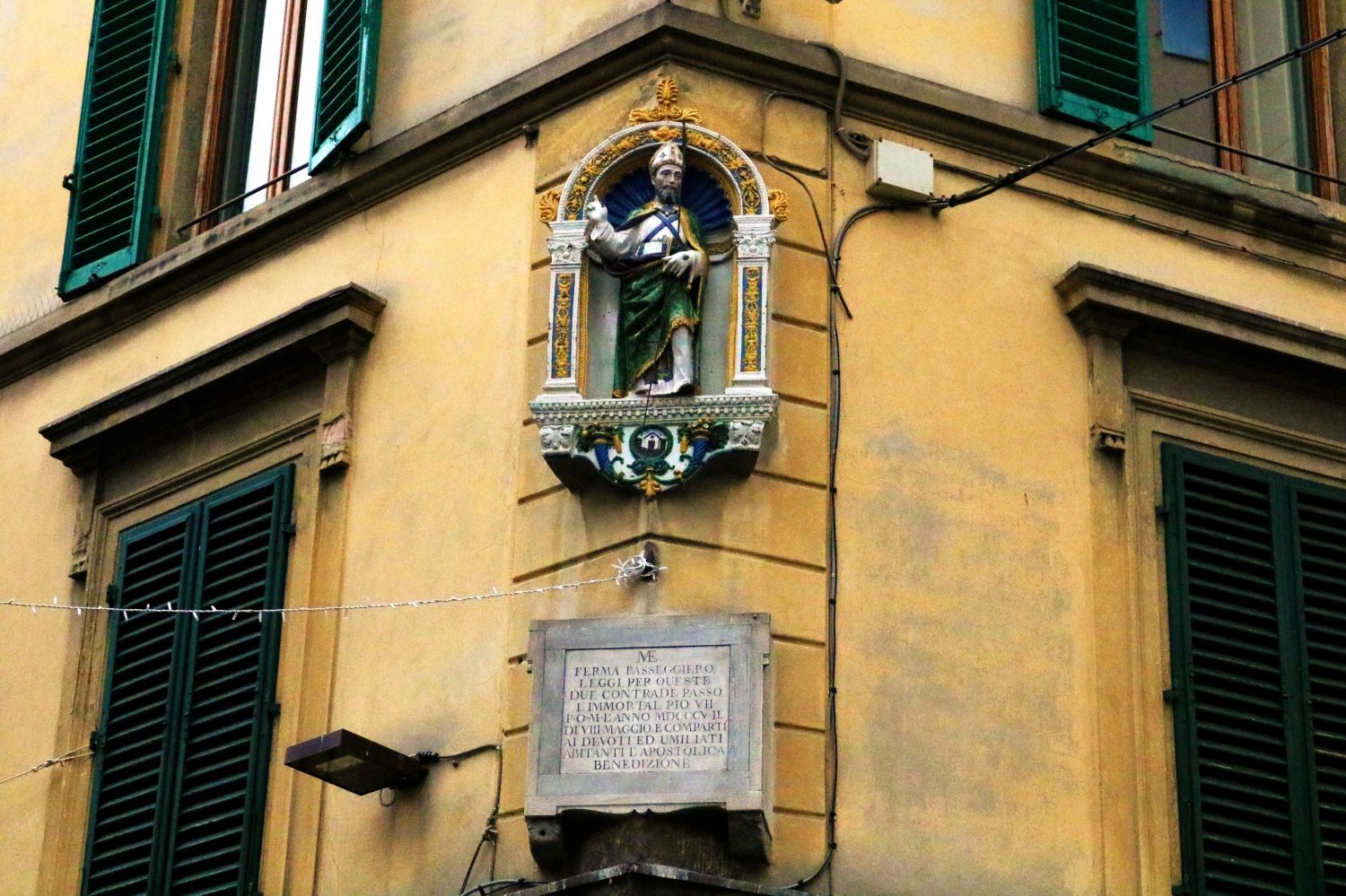



Tabernacles are small-to-medium sized religious architectural structures containing sculptures or frescoes of sacred people, along with prayers painted below the Holy image. There are over 1200 tabernacles all over Florence, particularly in the narrow streets or in the corners of some main streets. The majority of them depict the Holy Mary.
Tabernacles date back to the time of the Romans, when the people of that time felt it necessary to protect their homes and their loved ones from the religious struggles, known as the Catholic heresy fight. More specifically, Saint Peter, upon his arrival in Florence, announced that all Florentines should display their devotion towards the Catholic Church by placing an image of the Virgin Mary holding baby Jesus outside their home.
They used to organize religious services in front of the tabernacles, and lit the ancient lamps, which can be seen above the Holy image. The reason for this is due to the Black Death plague, which hit Florence in the 1300’s, and killed more than half of the population at that time. The Catholic clergy announced that it would be too dangerous to celebrate mass indoors due to the spread of the virus, and so mass was held outdoors in front of the tabernacles instead.
The lighting of the lamps was also a way of illuminating the city at night and protecting the passing travelers.
After the plague ended, Florence entered the peak of the Renaissance period, where the purpose of the tabernacles changed to became more of a fashion and a piece of art. Florentines where having competitions with their neighbours to find out whose tabernacle was the most beautiful.
In today’s modern age, the tabernacles no longer serve their religious purpose, yet are seen as a form of street art, adding charm to the beautiful outdoor museum city of Florence.
One of the most exquisite and distinctive tabernacles in the city is the Tabernacle of the Fonticine. It is situated in Via Nazionale and was fully restored by the Lorenzo de' Medici Institute after having been in a bad state for many years. It was created in 1522 by Giovanni della Robbia, and is made entirely from glazed ceramics, also referred to as terracotta.
The Madonna, seated on the throne holding baby Jesus, young Saint John, and four other saints are positioned in the center of the large artwork, with God, the Holy Spirit, and angels positioned above them. Baby Jesus, holding two of his fingers up, is blessing whoever passes by. Other angels' heads stick out from the frame, which is surrounded by leaves and fruit.
The name of the tabernacle comes from the seven little fountain heads carved in marble which can be seen about a meter below the colourful ceramic sculpture.

Found in the corner of the intersection between Via de' Pucci and Via Ricaso, this tabernacle is considered to be the only one of its kind. It is considered special as it has 2 niches of frescoed paintings depicting two different things, under 1 large arc. In front of the frescoes are five votive lamps, giving the tabernacle its name.
The right frescoed painting depicts baby Jesus standing on Holy Mary’s lap. It is unclear as to what the left painting depicts due to how faded it appears, as most likely it was damaged by the flood in 1333.

